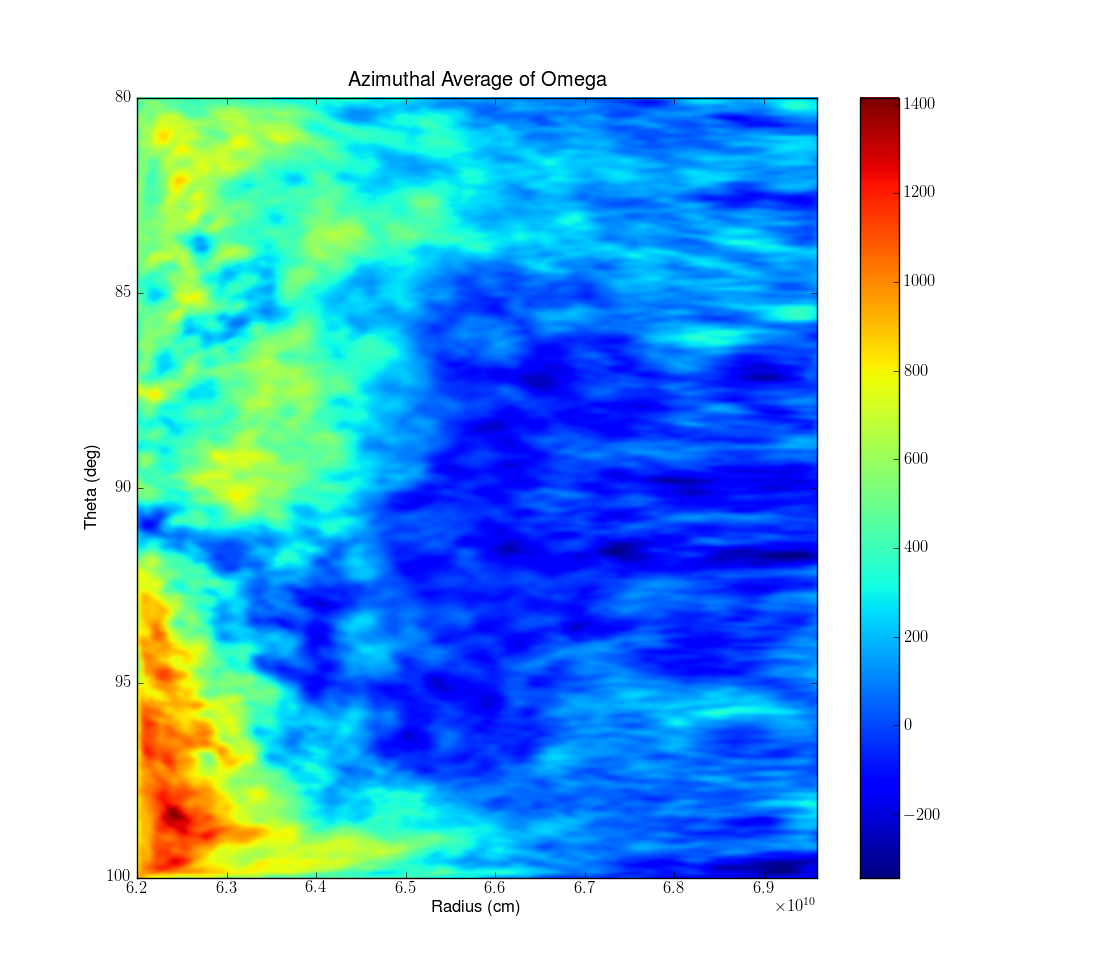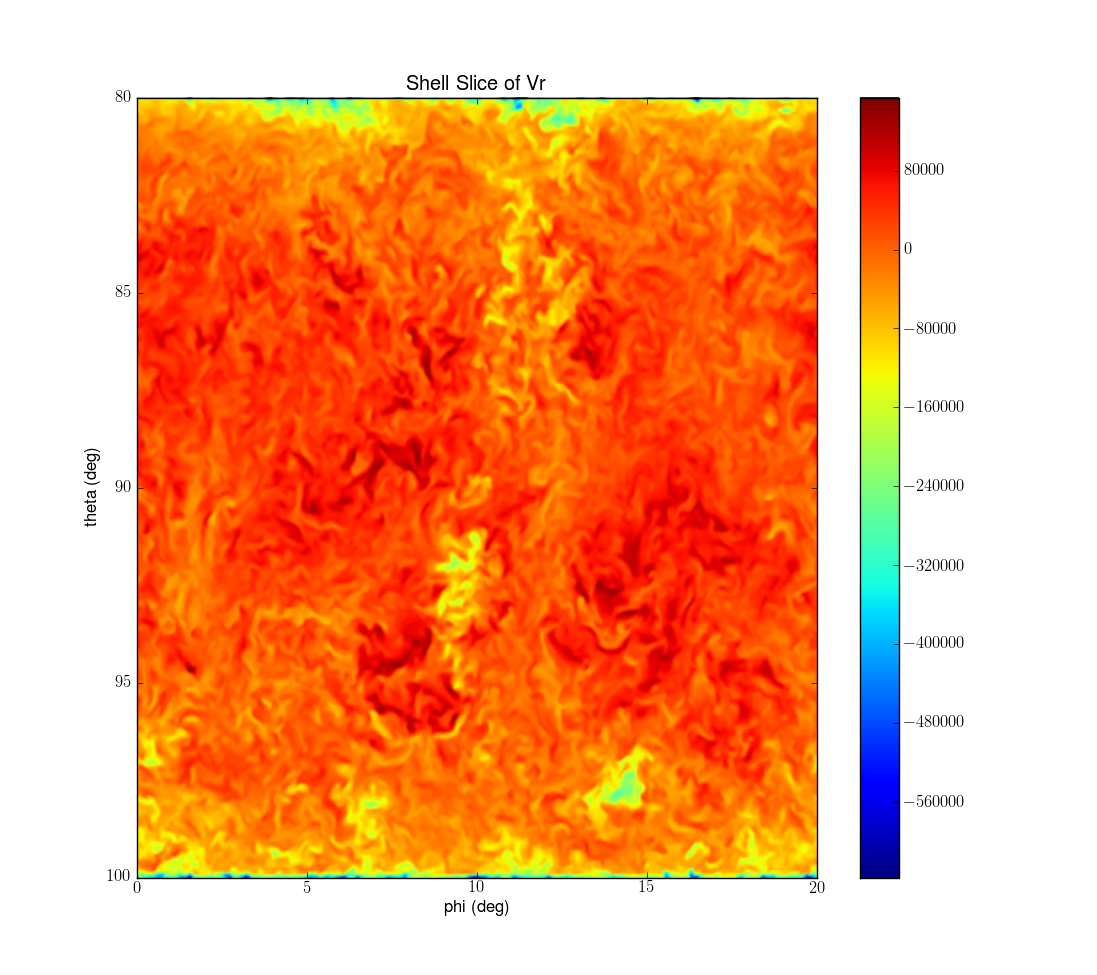Initial study
Our initial study explores how the NSSL behaves as we change the rotation rate of the Sun as well as the Luminosity that the surface releases. We do this in order to explore different Rossby numbers. A few preliminary figures are shown below:
Figure 1 shows an azimuthal average of the angular velocity. These are fully three dimensional data sets, so we average over the phi direction and plot the data on theta-radius axes. Blue indicates slower moving material, so closer to the surface the fluid is rotating slower.
Figure 2 shows a shell slice of the radial velocity. Red is the fastest moving material, flowing outward. Yellow, Green and Blue are negative indicating inward flow. You can see a vertical divide of yellow fluid around the phi=10 degree mark. This behaves a little bit like a convective cell where there is a boundary of inward flowing material surrounding an upward flow.

Figure 1: Azimuthal average of angular velocity. Red indicates positive inward and Blue indicates negative outward.

Figure 2: Shell slice of radial velocity. Red indicates positive outward flow and Yellow-Blue indicates negative inward flow.
Acknowledgements: The work at CU Boulder is supported by a George Ellery Hale Fellowship. This work utilized the Janus supercomputer, which is supported by the National Science Foundation (award number CNS-0821794) and the University of Colorado Boulder. The Janus supercomputer is a joint effort of the University of Colorado Boulder, the University of Colorado Denver and the National Center for Atmospheric Research.